When I arrived for the final gallery walkthrough, I was floored. Every photo printed. Every reflection template filled out. Every image framed. Yes, like actually framed, in IKEA frames and hung around the classroom. It looked and felt like a professional exhibit.
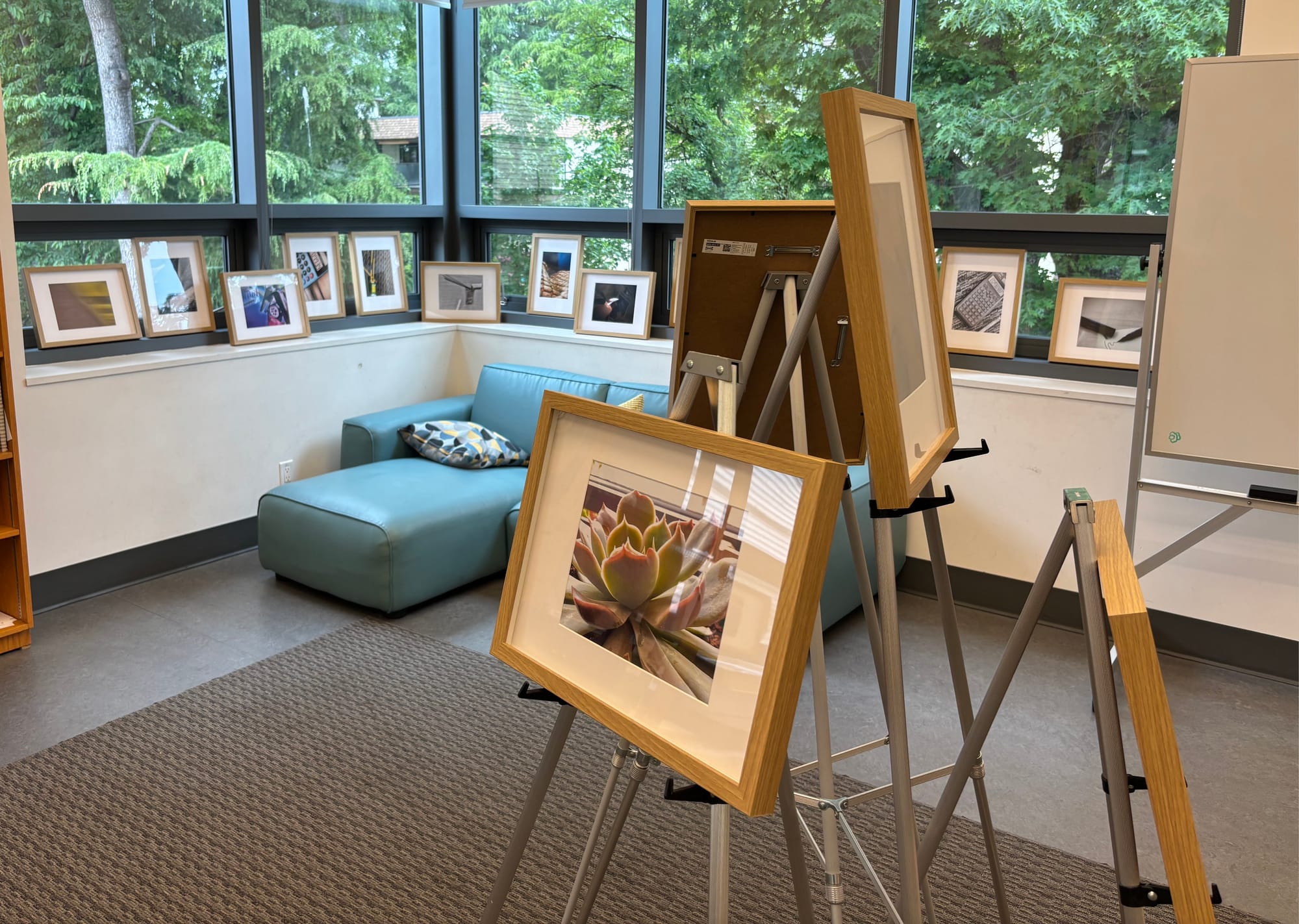
About a month earlier, Dorothy and I ran the same project we piloted in another school: take as many photos of one object as you can, no repeats. Since then, the class had picked a favourite, edited it, and reflected on the process.
Each student gave their image a title, explained what it meant, and broke down the decisions behind their edits. They used an intention-mapping organizer to articulate what they were trying to say—before they made the work.
Now, at the gallery, Dorothy brought that map back.
Did your intention match what people saw? Why? Why not?
That one question shaped everything that followed.
Gallery Walk 🖼️
We had both Grade 7 classes (about 60 students) circulating through the room with sticky notes. At first, there was a crowd around the first few images. It felt… important. Like a real opening. Hushed voices. “Ooohs” and “whoa”s. You could feel the shift when the first sticky note hit a frame—after that, it took off.
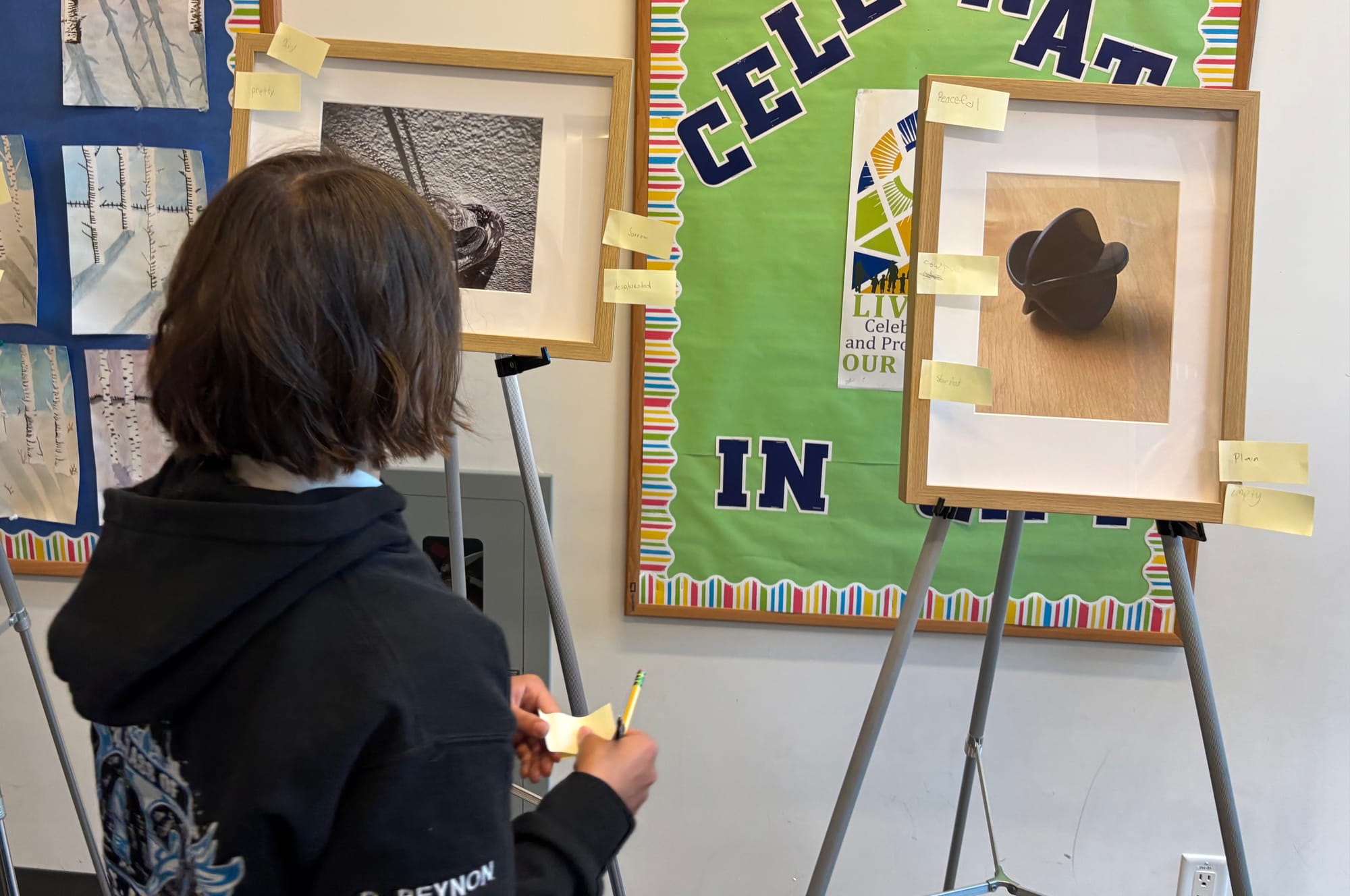
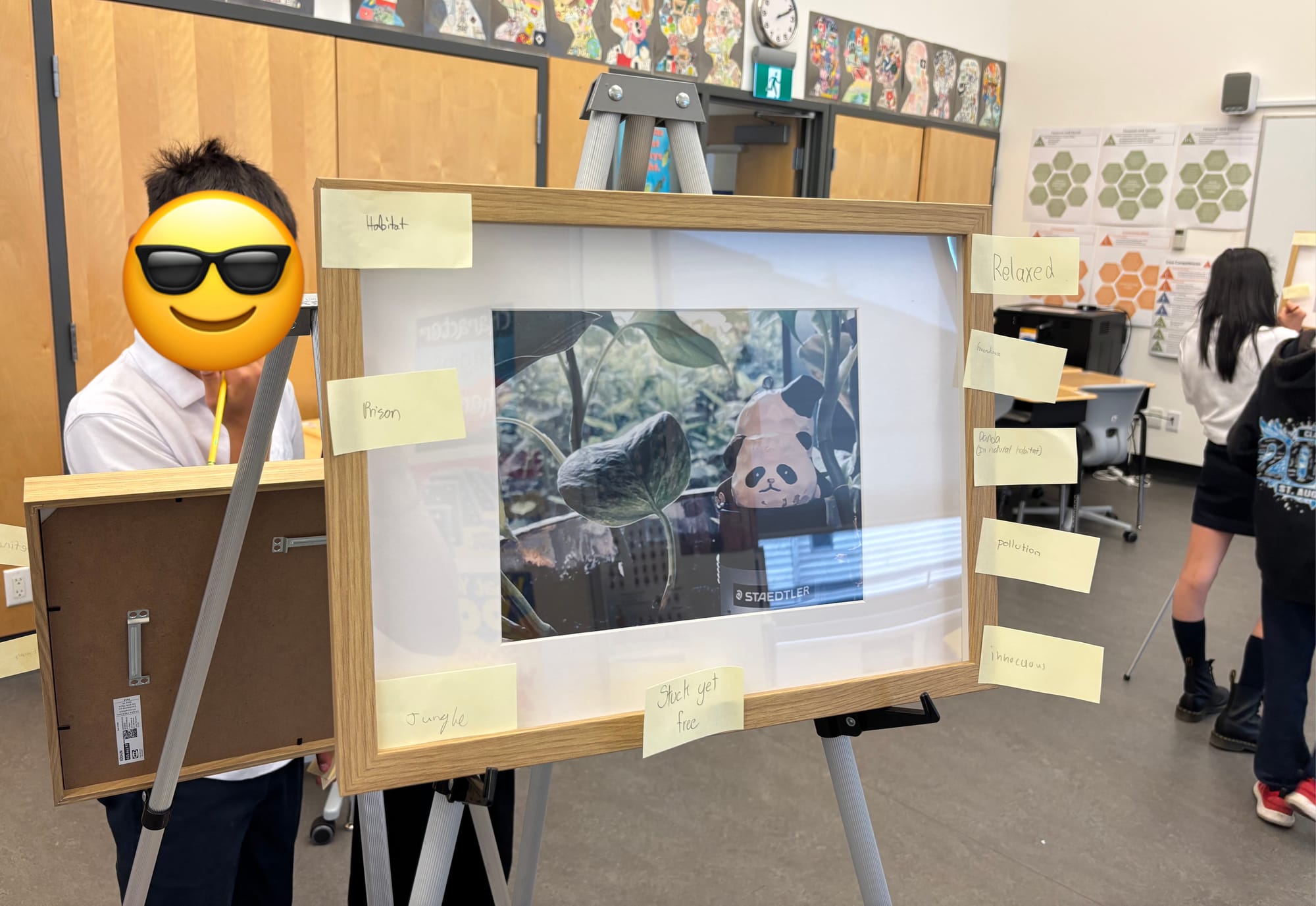
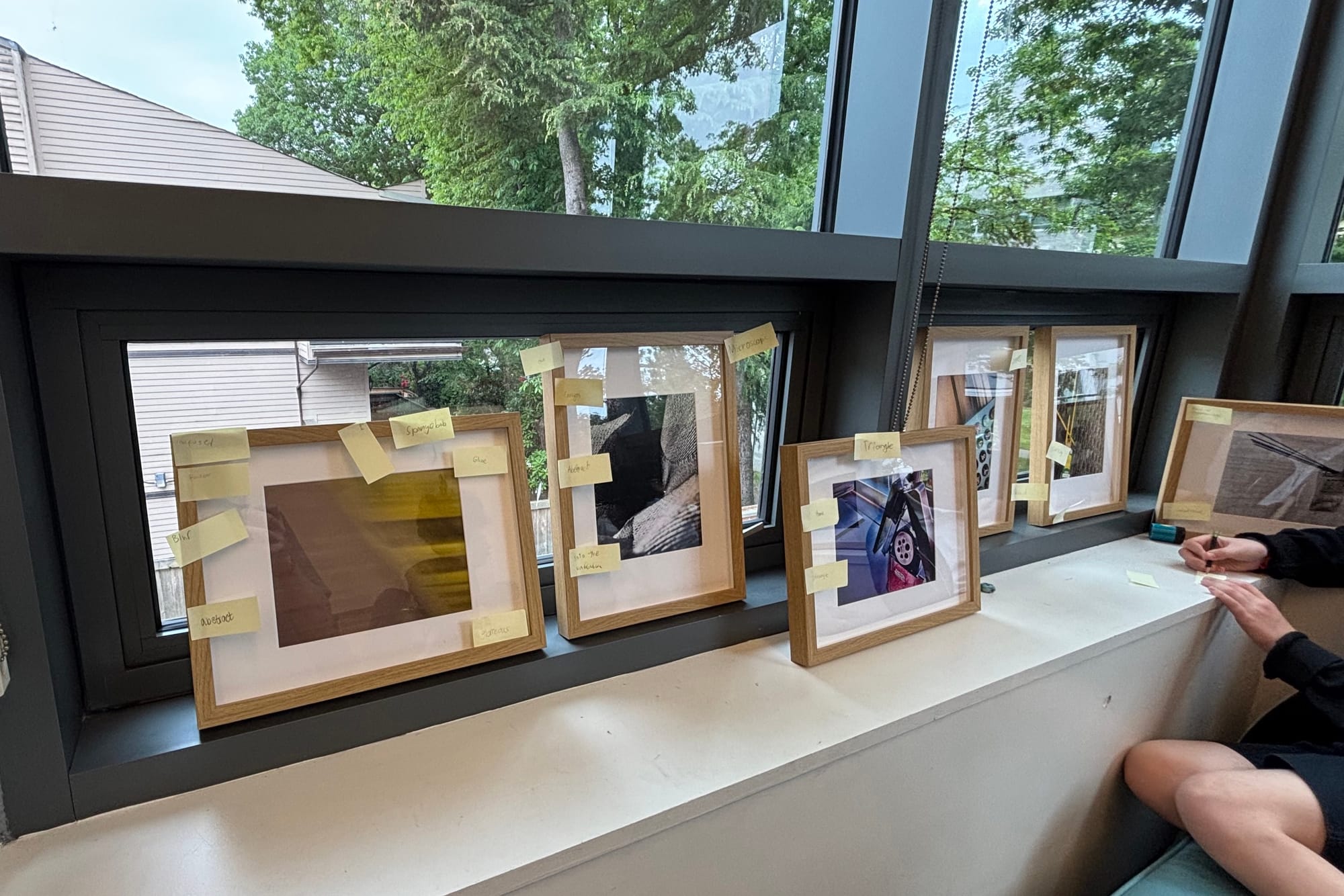
Each student responded to others’ work by writing alternate titles or emotional reactions. No “cool pic.” The challenge was to say what the image made you feel or think.
The range was wide and sometimes weird in the best way.
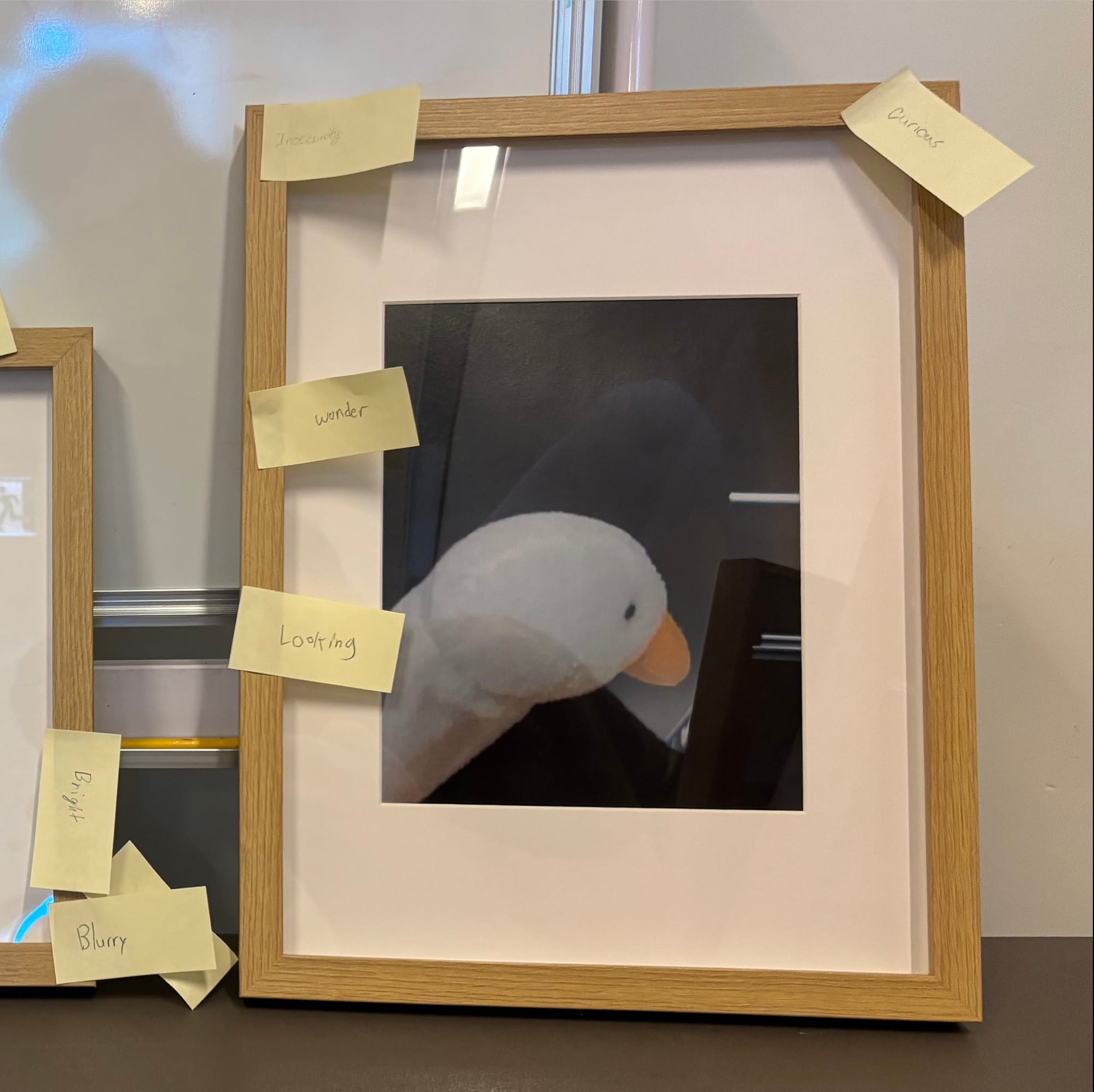
A photo of a stuffed goose, turned away from the camera, got a note that just said:
“Insecure.”
It made me laugh. But it also made me pause.
A photo of a calculator had a sticky note with “AI” scribbled on it. What does crazy advanced modern tech mean to a 12-year-old right now? It’s a little fuzzy, I guess!
By the end, each photo had four to six responses. Little constellations of interpretation and conversation, right there on the frame.
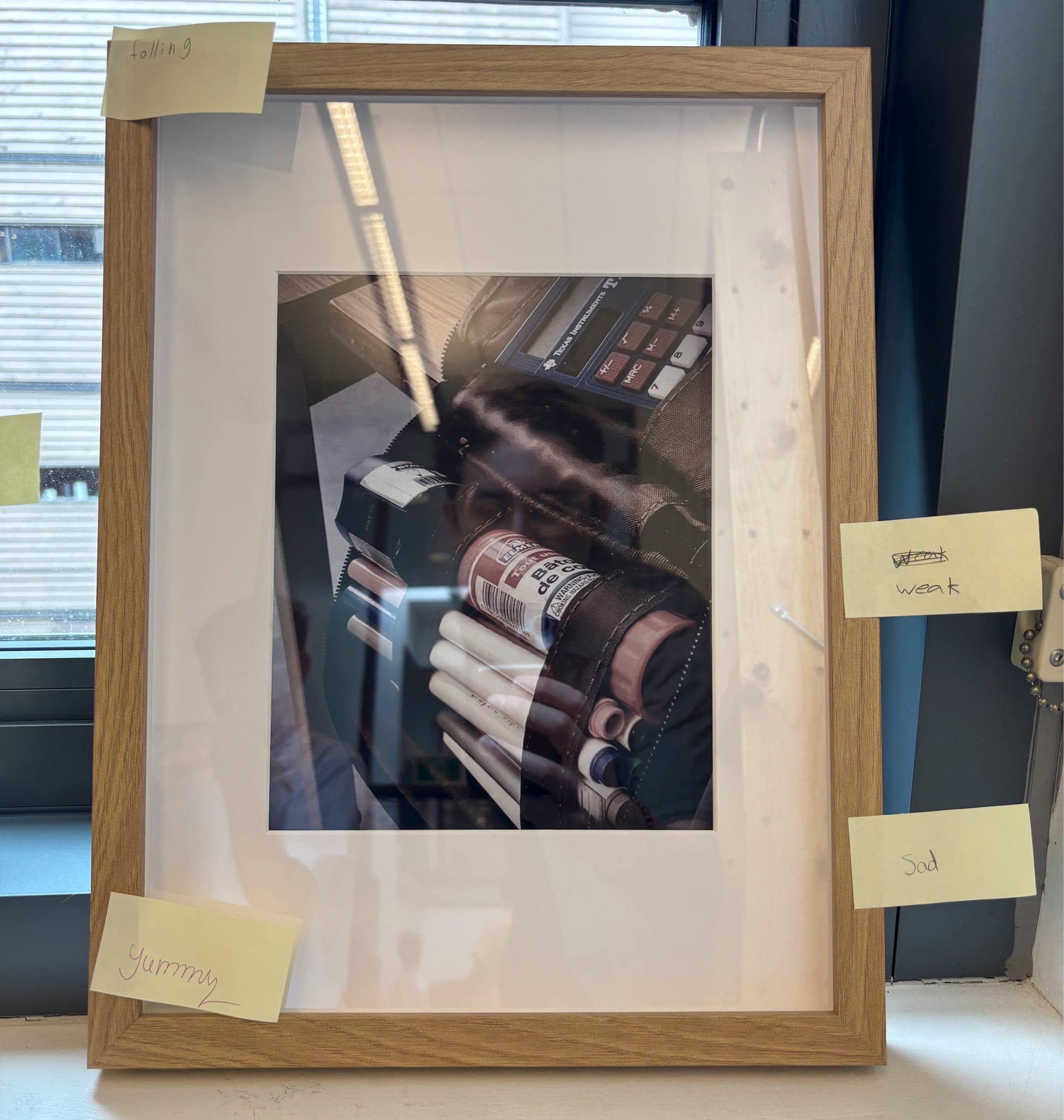
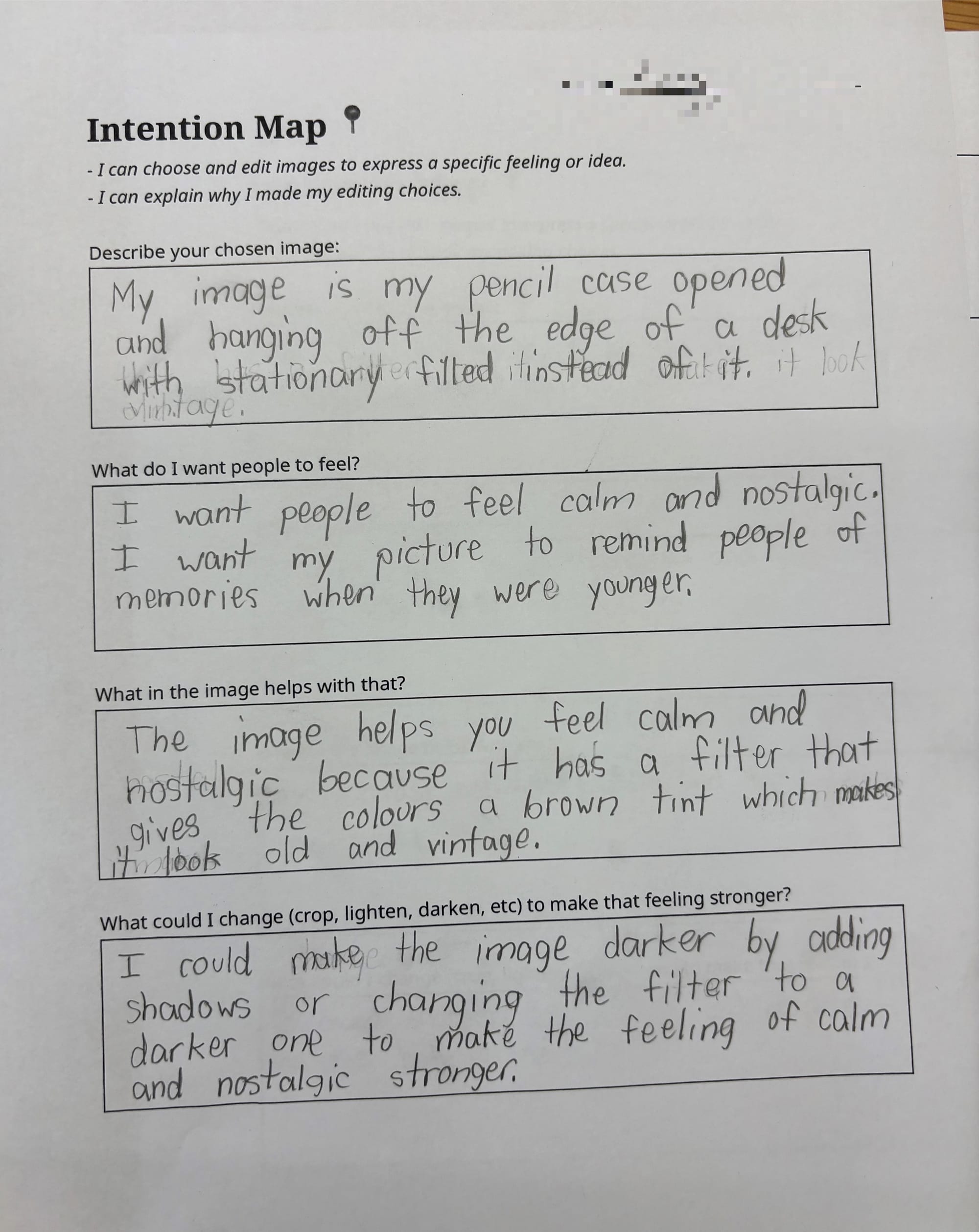
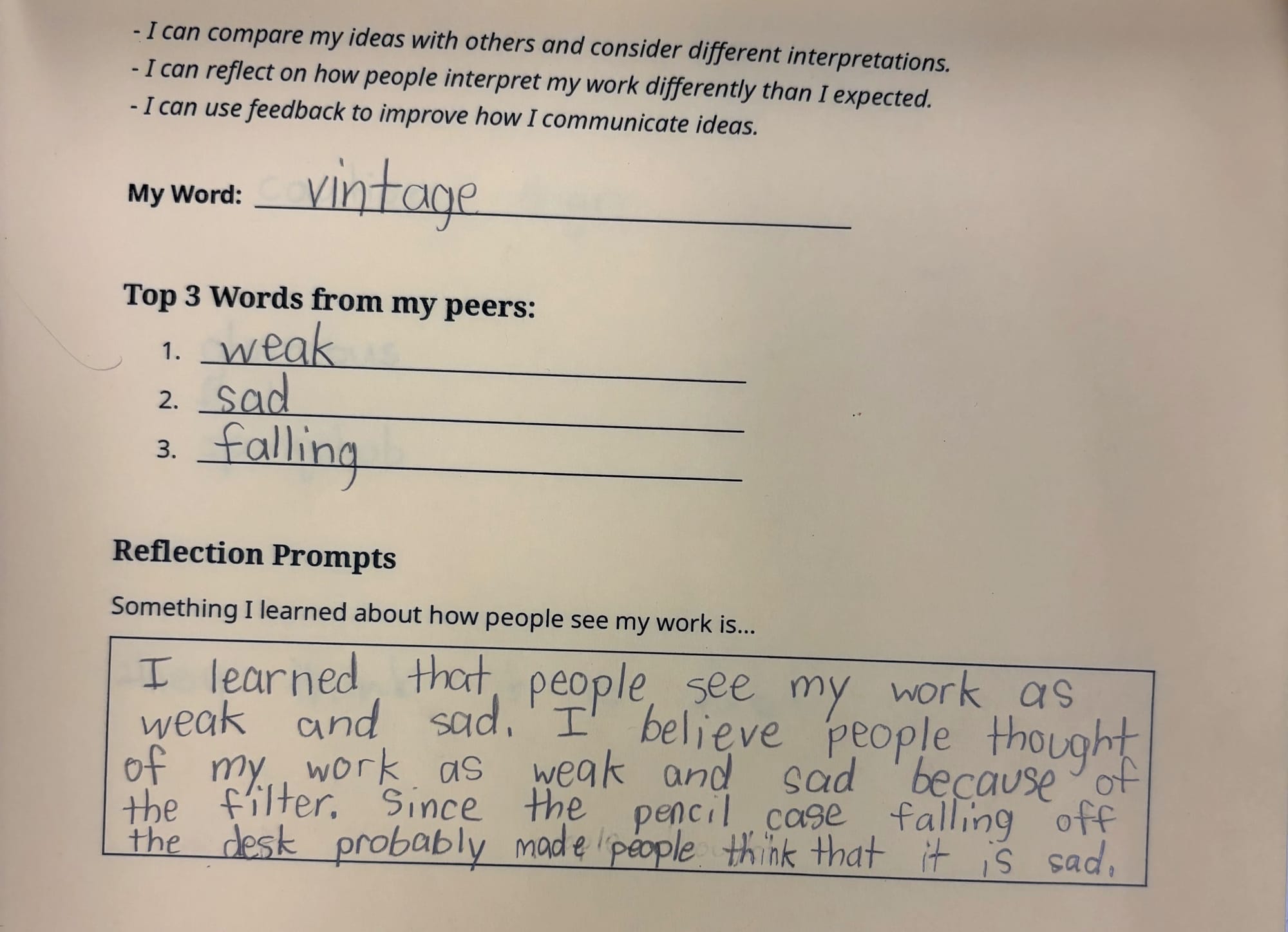
A photo, the intention map and reflection.
The final step was comparing all that outside interpretation with the artist’s original intent. Some lined up perfectly. Some didn’t at all. The best part? That disconnect became the lesson. The students focused on that space in between the artist’s intention and the viewer as they reflected on their work.
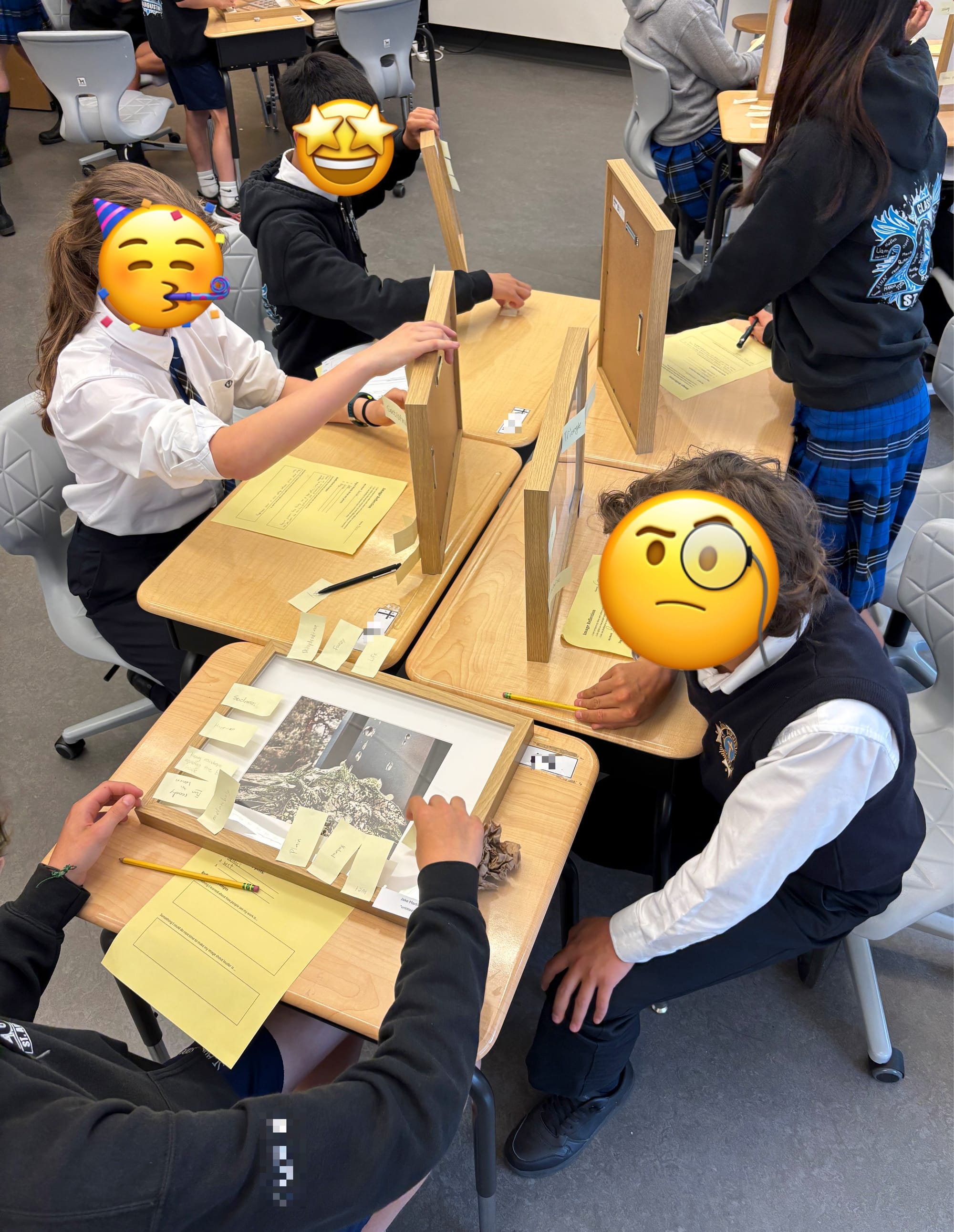

Reflecting on words from their peers.
Teaching through Process 🌱
Dorothy and I talked about how teaching photography through the process, rather than before it, had a bigger impact. Instead of front-loading rules like the rule of thirds, she introduced concepts as students needed them.
For those who struggled to articulate their vision while shooting, editing became the space to figure it out. That’s where Dorothy stepped in—using framing, contrast, and colour correction as tools to help students shape what they were trying to say, even if they couldn’t name it at the time.
Afterward, she told me how much the intention mapping and reflection tools helped. Linking that first creative impulse to how others responded gave the project a real sense of closure. A full creative loop.
The IKEA Effect 🪑
The IKEA effect is a psychology term that says we care more about things we help create. In classrooms, it shows up when students shape their learning. Not just following directions, but making choices, building meaning, and seeing their ideas come to life.
Whether it’s co-creating rules or designing a project from scratch, the more they build, the more they care.

